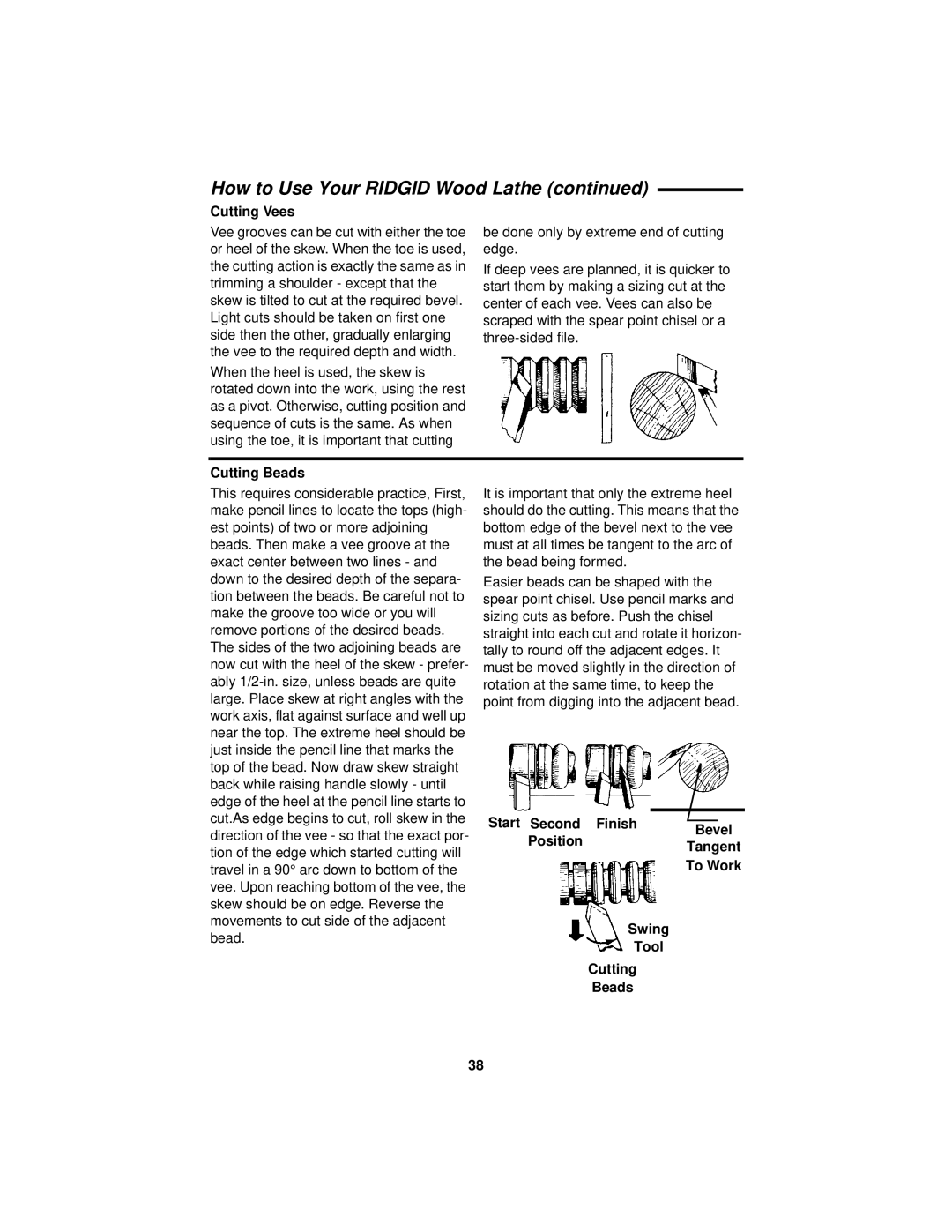
How to Use Your RIDGID Wood Lathe (continued)
Cutting Vees
Vee grooves can be cut with either the toe or heel of the skew. When the toe is used, the cutting action is exactly the same as in trimming a shoulder - except that the skew is tilted to cut at the required bevel. Light cuts should be taken on first one side then the other, gradually enlarging the vee to the required depth and width.
When the heel is used, the skew is rotated down into the work, using the rest as a pivot. Otherwise, cutting position and sequence of cuts is the same. As when using the toe, it is important that cutting
be done only by extreme end of cutting edge.
If deep vees are planned, it is quicker to start them by making a sizing cut at the center of each vee. Vees can also be scraped with the spear point chisel or a
Cutting Beads
This requires considerable practice, First, make pencil lines to locate the tops (high- est points) of two or more adjoining beads. Then make a vee groove at the exact center between two lines - and down to the desired depth of the separa- tion between the beads. Be careful not to make the groove too wide or you will remove portions of the desired beads. The sides of the two adjoining beads are now cut with the heel of the skew - prefer- ably
It is important that only the extreme heel should do the cutting. This means that the bottom edge of the bevel next to the vee must at all times be tangent to the arc of the bead being formed.
Easier beads can be shaped with the spear point chisel. Use pencil marks and sizing cuts as before. Push the chisel straight into each cut and rotate it horizon- tally to round off the adjacent edges. It must be moved slightly in the direction of rotation at the same time, to keep the point from digging into the adjacent bead.
Start Second Finish |
|
|
| |
| Bevel | |||
Position |
| |||
Tangent | ||||
| ||||
| To Work | |||
Swing
Tool
Cutting
Beads
38
